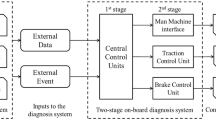Abstract
Utilization-based admission control policies for processors executing aperiodic tasks are often favored due to their low overhead. This paper investigates utilization-based admission control for uniprocessor systems executing aperiodic tasks following the earliest deadline first priority assignment. We first propose a new constant time utilization-based admission control policy, CTAC. We prove that CTAC is safe and will admit any task instance that can be admitted by the best existing utilization-based admission control policy, ASL, given the same processor state. We also introduce an optimal utilization-based admission control policy, OPAC. It is proved that given the same processor state, a newly arriving task instance that can be admitted by any other safe utilization-based admission control policy can also be admitted by OPAC. We also show that OPAC cannot be implemented in constant time. Simulation results show that CTAC indeed outperforms ASL with constant time complexity and achieves performance close to OPAC in terms of various metrics.







Similar content being viewed by others
Notes
A related task model, acyclic task model, is introduced in Abdelzaher et al. (2004) and shown to be equivalent to the aperiodic task model when considering schedulability. Since any admission control policy for aperiodic tasks can also be applied to acyclic tasks and the aperiodic task model is better known, we use the aperiodic task model.
Unless explicitly stated, optimality always refers to optimality in the sense of maximum admission capability.
References
Abdelzaher TF, Sharma V, Lu C (2004) A utilization bound for aperiodic tasks and priority driven scheduling. IEEE Trans Comput 53(3):334–350
Abdelzaher T, Sharma V (2003) A synthetic utilization bound for aperiodic tasks with resource requirements. In: Proceedings of the 15th euromicro conference on real-time systems. IEEE Computer Society, pp 141–150
Andersson B, Ekelin C (2007) Exact admission-control for integrated aperiodic and periodic tasks. J Comput Syst Sci 73(2):225–241
Bansal N, Pruhs K (2010) The geometry of scheduling. In: Proceedings of the 51st annual IEEE symposium on foundations of computer science. IEEE Computer Society, pp 407–414
Baruah SK, Cohen NK, Plaxton CG, Varvel DA (1996) Proportionate progress: a notion of fairness in resource allocation. Algorithmica 15(6):600–625
Brodnik A, Carlsson S, Fredman ML, Karlsson J, Munro JI (2005) Worst case constant time priority queue. J Syst Softw 78(3):249–256
Buttazzo GC, Stankovic JA (1995) Adding robustness in dynamic preemptive scheduling. In: Fussell, Malek (eds) Responsive computer systems: steps toward fault-tolerant real-time systems. Kluwer Academic Publishers, Dordrecht
Chetto H, Silly M, Bouchentouf T (1990) Dynamic scheduling of real-time tasks under precedence constraints. Real-Time Syst 2(3):181–194
Gopalakrishnan S (2012) Sharp utilization thresholds for some realtime scheduling problems. SIGMETRICS Perform Eval Rev 39(4):12–22
Liu X, Abdelzaher T (2011) Nonutilization bounds and feasible regions for arbitrary fixed-priority policies. ACM Trans Embed Comput Syst 10(3):1–25
Liu X, Abdelzaher T (2006) On non-utilization bounds for arbitrary fixed priority policies. In: Proceedings of the 12th IEEE real-time and embedded technology and applications symposium. IEEE Computer Society, pp 167–178
Nie W, Lin KJ, Kim SD (2011) Capacity-based admission control for mixed periodic and aperiodic real time service processes. In: Proceedings of the 2011 IEEE international conference on service-oriented computing and applications. IEEE Computer Society, pp 1–8
Stankovic JA, Spuri M, Di Natale M, Buttazzo GC (1995) Implications of classical scheduling results for real-time systems. Computer 28(6):16–25
van Emde Boas P, Kaas R, Zijlstra E (1976) Design and implementation of an efficient priority queue. Math Syst Theory 10(1):99–127
Varghese G, Lauck A (1997) Hashed and hierarchical timing wheels: efficient data structures for implementing a timer facility. IEEE/ACM Trans Netw 5(6):824–834
Acknowledgments
This work is supported by the National Key Basic Research Program of China (973 Program, Grant No. 2013CB 329305), National Science Foundation of China (Grant No. 61232013), Institute of Software, Chinese Academy of Sciences (Grant No. ISCAS2009-JQ03) and National Key Technology R&D program (Grant No. 2013AA040701). The work of Hu is supported in part by U.S. NSF under grant number CNS-1319904.
Author information
Authors and Affiliations
Corresponding author
Rights and permissions
About this article
Cite this article
Leng, C., Qiao, Y., Hu, X.S. et al. Utilization-based admission control for aperiodic tasks under EDF scheduling. Real-Time Syst 51, 36–76 (2015). https://doi.org/10.1007/s11241-014-9216-6
Published:
Issue Date:
DOI: https://doi.org/10.1007/s11241-014-9216-6




